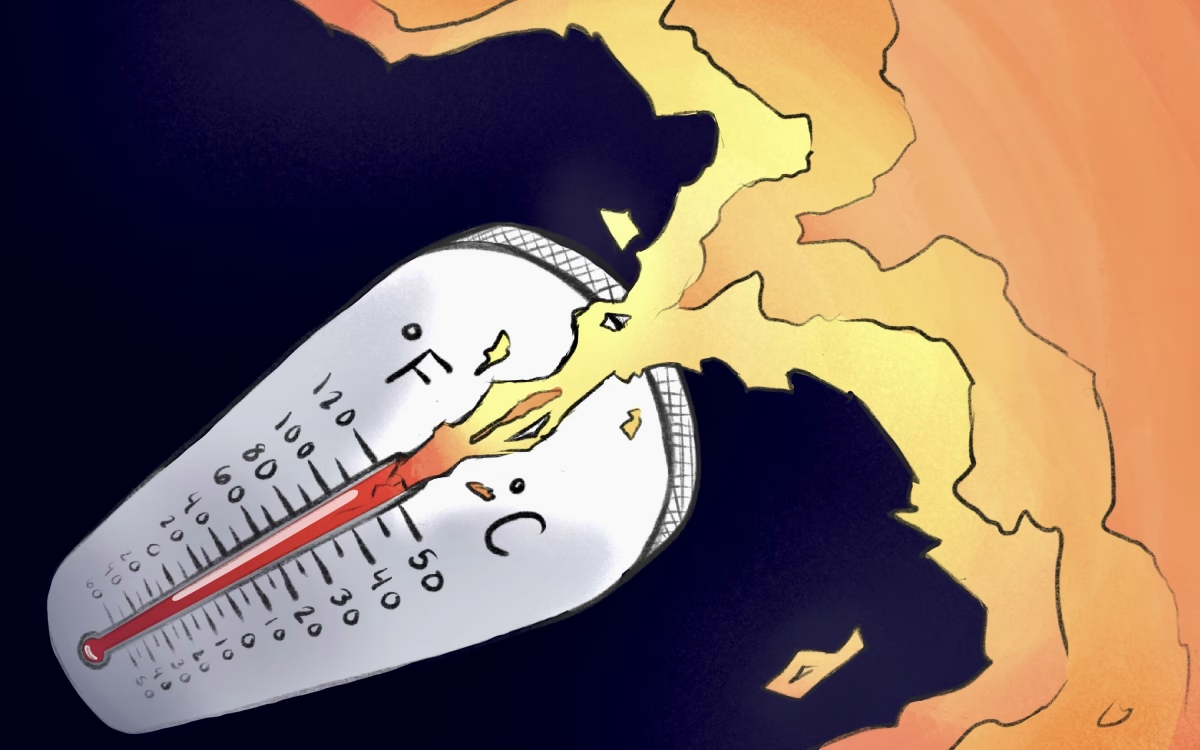Climate change is an irrefutable fact.
The summer average for 2024 was 0.2 degrees Fahrenheit hotter than the previous record holder, the not-so-distant year of 2023, and an entire 2.25 F warmer than the average summer between 1951 and 1980.
If this trend continues, scientists say we may see an increase of at least 1 degree Fahrenheit every five to 10 years.
But how much worry should 1 degree bring?
“Even if a degree doesn’t seem like a large change, that represents the change in the global average temperature,” Trent Ford, a Illinois state climatologist, said. “That extra energy changes the flow of our oceans and atmosphere to make for significant changes in regional climates and impacts human and natural systems.”
Just think of a fever – and how a rise of three or four degrees can take someone out for the whole week. Now apply that to an entire planet. Scientists worldwide have already documented how plant and animal life is disappearing at a rate never seen before. Weather patterns have gotten intense, giving the climate a volatile tendency.
“It’s pointing to a future where people don’t know what snow is anymore and a climate is just going to become inhospitable,” Pranav Dhiman, a DePaul junior in finance, said.
DePaul students are no strangers to climate change, especially when its effects have become so obvious.
“From an amateur point of view, I’d have to say cars.” DePaul sophomore Sterling Luckie said.
Transportation, a category including fossil fuels burned for cars, trucks, ships, trains and planes, accounts for roughly 30% of all emissions..
Burning fossil fuels to generate heat and electricity is another major producer of greenhouse gasses, such as CO2 and methane.
“The biggest contributor is capitalism,” Dhiman said. “Everything runs on the idea that there is infinite growth from a finite planet and it doesn’t make any sense.”
Experts like Ford agree.
“While individuals can make a huge difference in reducing climate change and its impacts, large corporations are the most significant emitters and contributors to climate change,” Ford said.
A report from Carbon Majors, a database that tracks CO2 emissions, found that “80% of these global emissions from 2016 through 2022 can be traced to just 57 corporate and state producing entities.”
In total, however, investor-owned companies were responsible for 25% of emissions between 2016 and 2022, with nations and state owned entities accounting for 38% and 37% respectively.
Although it feels like a bleak situation, Ford said hope shouldn’t be lost.
He pointed to the hole in the ozone layer as a “good example of an environmental challenge that humanity met.”
The hole was caused in a similar manner to climate change – pollution and the bottom line.
Over the course of the last 50 years, through policies like the Montreal Protocol, humanity has come together to prevent the release of “gasses like chlorofluorocarbons, or CFCs (which) destroy stratospheric ozone and are responsible for the ozone hole over Antarctica,” Scot Miller, assistant professor in the Johns Hopkins Department of Environmental Health and Engineering, said.
“While climate change is a more wicked problem, such that greenhouse gas emissions are intricately tied into our society and economy, we can look to other environmental challenges we have overcome and trust that we can make change,” Ford said.
As for making change, Ford advises four things: walkable infrastructure with accessible public transportation, a shift to electric vehicles to decrease transport emissions, accountability for corporation’s greenhouse gas emissions and decarbonized energy systems.
Related Stories:
- SPARK Center debuts with environmental data-driven neighborhood project
- Slowing down AI for the health of the planet
- Forthcoming Climate Action Plan, context behind high emissions
Support Student Journalism!
The DePaulia is DePaul University’s award-winning, editorially independent student newspaper. Since 1923, student journalists have produced high-quality, on-the-ground reporting that informs our campus and city.
We rely on reader support to keep doing what we do. Donations are tax deductible through DePaul's giving page.


